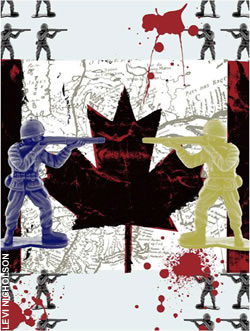The Must List: Trevor Cole
An exclusive, ongoing RRJ series featuring leading Canadian journalists and their top picks for pieces every journalist “must read,” “must watch” and “must listen” to before they die.
TODAY: writer Trevor Cole
Trevor Cole specializes in long-form magazine stories, having been a magazine editor at the Globe & Mail, a senior staff writer at Report on Business magazine, and writer for Toronto Life magazine. He has written three novels: Norman Bray in the Performance of his Life (2004), The Fearsome Particles (2006), and Practical Jean (2010).
Janet Malcolm: “The Journalist and the Murderer” (The New Yorker, 1989)
“This magnum opus had to be split into two parts in order to fit into the magazine (and was later published as a book). It details the personalities and circumstances around the lawsuit of convicted murderer Jeffrey MacDonald against journalist Joe McGinniss, whose non-fiction account of MacDonald’s life and murder trial, Fatal Vision, depicted MacDonald as a sociopathic killer. For anyone interested in long-form journalism, Malcolm’s piece — beginning with the line, “Every journalist who is not too stupid or too full of himself to notice what is going on knows that what he does is morally indefensible” — offers a complete immersion into the issue of journalistic ethics and a fascinating analysis of the problematic relationship between journalist and subject. When it was first published, it was inhaled by every serious journalist, and for young writers, it’s a goldmine of insight.”
Jonathan Harr: “The Burial”(The New Yorker, 1999)
“This piece profiled Mississippi lawyer Willie Gary and the lawsuit he fought and won against the huge Canadian funeral home company, The Loewen Group. To me, this story is the whole package: a terrific profile of the main protagonist in this drama, Willie Gary, a great narrative, and an in-depth case study. It takes its time, like all the best New Yorker pieces, and it delivers a big, satisfying payoff (if you cheer for the underdog). The fact that the villain in the story is a Canadian company means that it was a story available to any Canadian journalist and any magazine willing to devote the money and space.”
Gene Weingarten: “The Peekaboo Paradox” (Washington Post Magazine, 2006)
“Some profiles, like Esquire‘s undoubtedly great piece “Frank Sinatra Has a Cold,” take on greater significance because of the size and fame of the subject. But this Weingarten story is a fine example of what can happen with a relative unknown when a writer follows his instincts and digs past the obvious surface. It’s a profile of a children’s entertainer, The Great Zucchini. What starts as an amusing story about a guy who makes big money hitting himself with balloons and wearing soiled diapers on his head becomes something much larger and darker as the writer looks harder. Why is The Great Zucchini always unshaven? Why is he so short of cash? But most important, to me, is that the writer never leaps to judgment. He approaches his subject with a clear, unbiased eye, and that allows him to get to the heart of a story that is, in the end, quite tragic.”
(Editor’s Note: Both of the New Yorker stories are only accessible by subscription)








![[Redacted]](../wp-content/uploads/2014/12/Screen-Shot-2014-12-03-at-11.13.02-AM-150x150.png)







